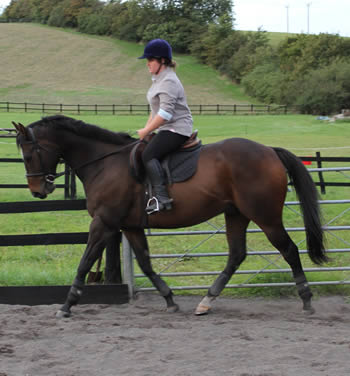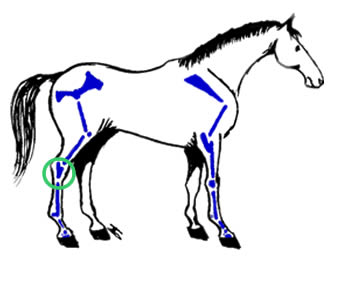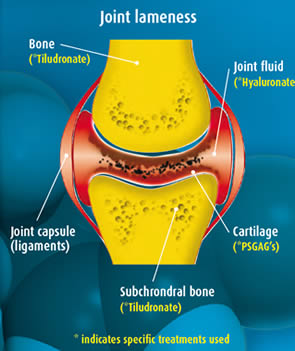
And photographs, if you have any.
Horseytalk.net Special Interview
Jeanine Preece
Sound future for lame ex-racehorse
 It was a dream come true for Jeanine Preece from Bristol when her husband
Lee gave her a beautiful bay Thoroughbred gelding as a surprise Christmas
present.
It was a dream come true for Jeanine Preece from Bristol when her husband
Lee gave her a beautiful bay Thoroughbred gelding as a surprise Christmas
present.
Jeanine, who is a Geography teacher, explains: 'I was totally bowled over when Lee took me to meet George on Christmas morning. He was the best Christmas present I could ever have wished for. Not only was he devastatingly handsome but he had the most amazing temperament too. He couldn't have been more perfect. I was the happiest person in the world that Christmas."
Jeanine kept George on a DIY livery yard nearby and quickly fell into the new routine of getting up at 5am for a refreshing hack or schooling session before work. But just a few months later her joy turned to devastation when George became persistently lame.
Vet Duncan Ballard BVM&S CertEP MRCVS from B and W Equine Group in Failand near Bristol was called in to investigate the problem. He carried out a series of tests, nerve blocks and radiographs which identified significant osteoarthritic changes to not only the two lower hock joints in George's left hind leg but also the tarsocrural joint.
He explains: "On initial examination I found that George had developed a bog spavin on the left hind limb. He presented as 3/10ths lame on the near hind and was 6/10ths lame post flexion. Following a nerve block to the lower hock joint he was much improved and trotted up at just 1/10th lame. Radiographs confirmed extensive osteoarthritic changes to the main joints in the hock. It's likely that the damage was a result of trauma from an old injury."
 Duncan had first come across Tiludronate when it was undergoing trials at
the Royal Veterinary College in 2006. When it was licensed for use in the UK
a couple of years ago he began to use it to treat cases that did not respond
well to steroidal medication and had some very positive results. He also
favours the drug as a long term management protocol for cases that involve
more than one area of extensive bony change, such as kissing spines and
osteoarthritis of more than one joint.
Duncan had first come across Tiludronate when it was undergoing trials at
the Royal Veterinary College in 2006. When it was licensed for use in the UK
a couple of years ago he began to use it to treat cases that did not respond
well to steroidal medication and had some very positive results. He also
favours the drug as a long term management protocol for cases that involve
more than one area of extensive bony change, such as kissing spines and
osteoarthritis of more than one joint.
Initially Duncan medicated George's lower hock joints with a steroid-based treatment but when the horse showed no improvement he recommended Tiludronate. George was admitted to the veterinary practice where he was sedated before Tiludronate was administered as a single infusion over a period of approximately 30 minutes. George was able to go home the same day.
Over the following weeks Jeanine built up a programme of controlled exercise. Six months later, after a brief setback with a slight bout of laminitis, Duncan took further radiographs of the joints and was impressed to see that they were starting to bridge on the dorsolateral aspect. He advised a second dose of Tiludronate as a precautionary pain management option, explaining to Jeanine that this would be a safer method than a steroid-based treatment which could provoke another attack of laminitis. Just eight months on from the first treatment and George has made remarkable progress.
 Duncan reports: "George is sound and doing incredibly well. He has muscled
up evenly, where previously he had severe muscle atrophy on his left hind
quarters and he's fit, healthy and in full work."
Duncan reports: "George is sound and doing incredibly well. He has muscled
up evenly, where previously he had severe muscle atrophy on his left hind
quarters and he's fit, healthy and in full work."
Jeanine continues: "The transformation has been incredible. George is like a new horse. He's much freer moving and has much more power but he's still a charming gentleman to ride. We are hoping to do some dressage competitions later this year which I never believed would be possible. I can't thank Duncan enough for being 110% committed to George's wellbeing and his future as my riding horse."
How Equidronate® works Tiludronate has been used to treat bone spavin successfully in Europe for several years. The treatment is designed to regulate and improve the bone remodelling occurring next to the arthritic joints, to slow down the degradation of the bone structures and to alleviate pain.
In simple terms bones remodel all the time but with osteoarthritic conditions such as bone spavin the bone-producing cells (oesteoblasts) can't keep up with the bone-removing cells (osteoclasts). Equidronate® actually helps to stop the osteoclasts from continuing to disrupt the bones within the joints. It prevents further damage and gives the osteoblasts a chance to catch up and repair the problem.
For further information on Tiludronate./Tildren®/Equidronate® visit
the
website at www.tildren.com or contact
CEVA at 90 The Broadway, Cheshmam,
Bucks, UK Tel 01494 781510.



